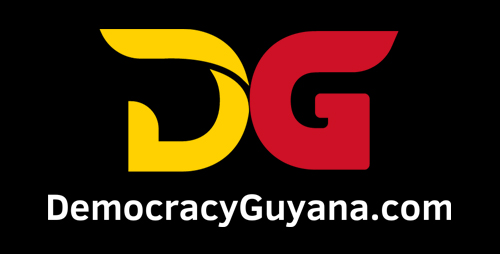Not so long ago, a trillion-dollar budget would have been dismissed as an impossibility. Budget 1990 was just $11B, Budget 2000 $44B, Budget 2010 $142B, Budget 2020 $254B.
Contemplating a budget of more than a trillion dollars was not even in our imagination in 1990 or in 2010. When Budget 2020 followed the disgraceful attempt to thief the general elections and stab democracy in the back, we saw a jump in the total budget amount; but most people, including ardent supporters of the PPP and President Irfaan Ali, had doubted that Guyana would have reached this glass ceiling in President Ali’s first term. Yet, Guyana has surpassed a budgetary allocation of a trillion dollars, and President Ali has another budget to present for 2025. The decade-by-decade increases between 1990 and 2000 was 400%; between 2000 and 2010, it was 323%; and between 2010 and 2020, it was 178%. In just over three years, under President Ali and VP Bharrat Jagdeo, the budget allocation has increased by almost 500%.
Since 1990, Guyana’s budget has increased by 100 times. There will naturally be much hand-wringing, with the Opposition insisting that, biggest or not, the people are not benefitting. But, more than ever, there was much excitement in anticipating Budget 2024. While, naturally, a large number of citizens would have wanted to see larger numbers for disposable incomes in Budget 2024, everyone knows that PPP budgets usually have “goodies” in the form of disposable income. In contrast, budgets presented by the PNC/APNU/AFC were always an event that stirred fear in people; because, invariably, they reduced or eliminated disposable incomes and imposed tax burdens on people. It is why old-time budgets had ugly names like “pick-pocket” budget. Between 2015 and 2020, they removed disposable incomes, such as bonus for the disciplined services and the “Because We Care” programme, and added 200 new taxes.
It is not shocking that the first response from the Leader of the Opposition and other senior Opposition members was to quickly dismiss the budget as one with nothing in it for the people, but with lots of things for “family and friends” of the PPP. According to the Opposition, the record allocation for infrastructure is not for the people, but for “friends” of the PPP. When the Demerara River, Corentyne River, and the new Berbice River bridges are completed, would they not benefit all of us? When hospitals are built, who benefits? Ask the people in the villages — whether they support PPP or PNC or AFC or whichever of the one-man parties — if they do not want the streets to be built or the housing schemes developed. It is obnoxious that allocations to improve people’s lives are seen merely as creating opportunities for “friends” of the PPP.
Budget 2024 creates a new bar for disposable incomes. Every worker that is on the tax payroll will benefit. The increase of the tax threshold from $85,000 to $100,000 will save every worker — whether at the low end or at the high end — $4200 per month. At the minimum, this transfers more than $6B from the Government’s coffers into people’s pockets, and this ends up supporting the local economy.
There are now 76,000 old-age pensioners (OAP). Old-age pension has been increased by $3,000 per month. The Opposition insists this is meaningless. This is the same Opposition that had, in 2015, promised to double OAP in the first 100 days of their administration. After five years, from 2015 to 2019, OAP was increased from $13,000 to $19,000, an increase of 46%.
From 2020 to Budget 2024, OAP has increased by 89%, and President Ali’s first term still has one more budget to go. In addition, pensioners received one extra month of payment in 2023, and also had one-off payments in 2022 and 2021. Budget 2024’s increased allocation will amount to almost $3B of disposable income being poured into the communities’ economies.
The “Because We Care” payments for 205,000 children have been increased by $10,000. This adds more than $2B in disposable income across our country. Public assistance has been increased by $3,000 per month. More than $7B in cost-of-living measures, cancellation of UG student loans, NIS minimum pension, NIS survivors’ pension, removal of VAT from many different items, increase in part-time job opportunities, more than $4.6B in vouchers for eye care and cervical cancer screening, increases for disabled persons, more than $9B for Amerindian communities, more than $450M for funding of small businesses, reduction in freight charges, reduction in cost of living and medical insurance which become tax-deductible payments, etc. add enormously to disposable incomes.
The dramatic increase in disposable incomes in Budget 2024, if added up, amounts to about $200B, accounting for about 17% of the total budget, outside of salaries and other benefits. OAP alone is about $33B. The “Because We Care” initiative is about $10B. The Small Business Fund overall is about $1B, the Part-time Job Initiative is about $10B, the cost-of-living support budget is $7B; the cost of fuel reduction, because of zero excise tax, is saving the citizens $40B, which remain in their pockets, the freight charge waivers will keep $6B in people’s pockets, and the various other initiatives add to make Budget 2024 one that sets a new bar for disposable income that the PPP Government is making accessible to the citizens of Guyana.
Early PPP governments under Cheddi Jagan focused on increasing social sector spending, increasing from 6% in 1991 to more than 20% by 1997. President Bharrat Jagdeo continued the increase in social sector spending, bringing it to 40% but added extra disposable income in people’s pockets. During President Ramotar’s tenure, the school children programme started. Now President Irfaan Ali is building on these foundations, setting new standards. No national budget in Caricom concentrates such a large percentage in disposable income for the population. Budget 2024 is remarkable for the disposable income component.
Subscribe to Updates
Get the latest news from DemocracyGuyana.com





